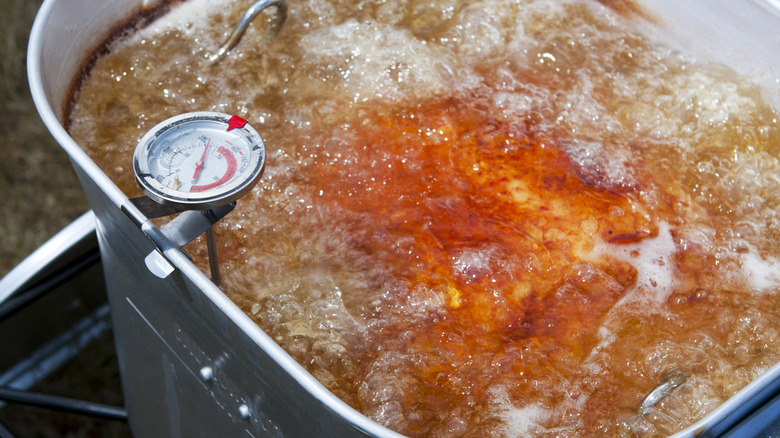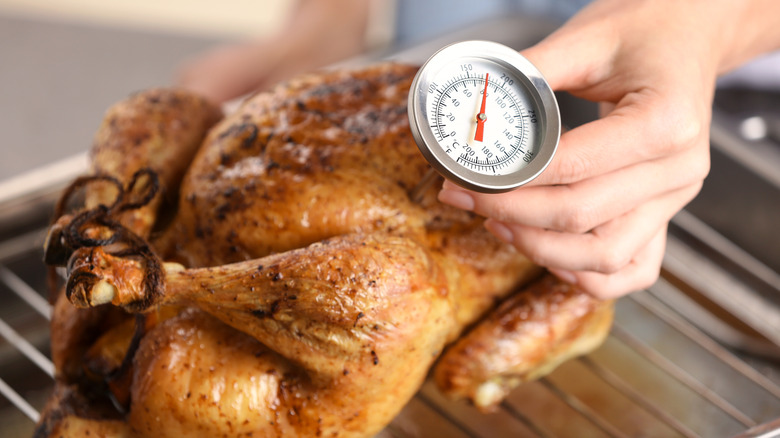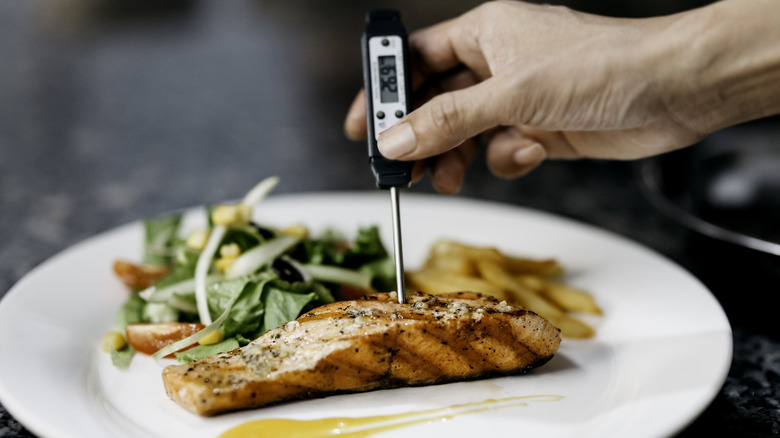A Meat Thermometer Should Be Your Go-To Frying Tool
When cooking any meat, you've got to keep an eye out for two things, doneness and safety. And a key method for achieving both of those things is to use a meat thermometer. The meat thermometer helps you confirm that your meat is fully cooked through without cutting into it. Or if your meat is done before you see visual cues, the thermometer can help you avoid overcooking the meat.
While a meat thermometer is amazing for measuring food temperatures, it is also a flexible tool, which is why some people, including the U.S. Department of Agriculture, prefer to call them kitchen thermometers. One way to get extra usage from the meat thermometer is when you're deep-frying: Use your thermometer to confirm that the frying oil is between 350 and 375 degrees Fahrenheit, which is the temperature your oil needs to maintain for frying. Then, when the oil is ready, you can put in your meat or poultry, and use your thermometer again to confirm when your food is ready.
How to use a kitchen thermometer
The first step to using a kitchen thermometer is to test it to make sure it's reading correctly. An easy way to do this is to put the thermometer in a glass of ice water: If it reads 0 degrees Fahrenheit, you are ready to start measuring food and oil temperatures. When measuring oil, you want to leave your thermometer in the oil for about half a minute before checking the readout.
When cooking food, the next step is to measure your food away from the heat source to make sure you're measuring the food rather than the temperature of your oven or stovetop. The last step is to stick the thermometer into the thickest part of the meat, away from the bones, to get an accurate read on the food's internal temperature.
This process is both helpful and safe. In addition to identifying doneness — a sometimes subjective measure based on your eating preferences — you should use kitchen thermometers because they're "the only reliable way to ensure safety" of meat, poultry, and egg products, according to the U.S. Department of Agriculture.
More best practices for kitchen thermometers
Among the mistakes everyone makes when using a meat thermometer, not washing the thermometer between uses is the most dangerous. One of the main reasons to use a thermometer is that until the meat is cooked through, it might have certain bacteria that could cause food poisoning or other illnesses. If you measure your meat and find that it is not fully cooked through, some of that bacteria could be sitting on your thermometer, so be sure to clean it before reinserting it into your food.
You should also keep in mind something called carryover cooking: When meat comes out of the oven or off the heat source, it continues cooking and its temperature continues to rise for a bit. So using your thermometer requires knowledge of the meat you're cooking. You will likely want to take your meat off of the heat source when it reaches a temperature a few degrees short of your desired internal temperature.
As with a lot of kitchen tools, the meat thermometer has many uses, and it can help you cook tastier and safer food.


